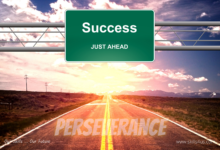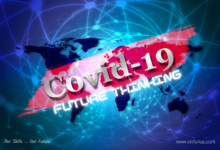
Future Thinking: An Innovative Mind For A Creative Future
Innovation requires future thinking, given that successful innovators try to develop their futuristic skills to envision possible. And reasonable scenarios for decades to come. For a long time, strategic planners believed that they would stand up to their competitors if they thought ahead, set a future vision, and created a somewhat more accurate picture of technologies, products, customer requirements, and future business models.
The following forces stimulate renewed interest in future activities:
- New futuristic methods and technologies
- The wealth of data and information, for example, volumes of information that can be accessed and shared easily
- more structured innovation systems, for example, more formal processes that require a clearer future perspective
As a result, future thinkers are turning to management levels, who develop long-term global corporate strategies, department heads responsible for profit and loss, and innovation leaders responsible for transformational and strategic innovation.
Future success and failure
Connecting the future to the present is a significant challenge for future activities. It is good to imagine and prepare scenarios for what the world might look like 25 years or more from now. The problem is, how does future thinking influence the decisions and actions of today’s business leaders? Future activities must influence those decisions and actions, or it is just an intellectual exercise. In general, many current future efforts lead to outcomes that make it difficult to relate the distant future to the present.
So what makes a future project successful, and what could negatively affect future efforts?
Time horizon – how far are you looking into the future?
- Future thinking organizations succeed in creating visions that fit a 5- to 15-year time horizon, the time frame to which the business division is associated.
- Struggling organizations struggling for the future tend to prepare long-term scenarios to make any difference to the current business.
Sensor systems – can you see the events that should lead to some action?
- Successful organizations set up continuous sensor systems that drive attention and action regardless of when specific events occur.
- Struggling organizations that are struggling to survive do not have a mechanism to know what events to look out for, constantly monitor the environment and report when something important happens.
Intermediate starting points – is there a specific path to follow?
- Successful organizations develop a specific path to the future through a set of parameters and conditions for which the organization works.
- Troubled organizations striving to survive have a vague vision of a possible future but have not created a path to get there.
Strategic Opportunities – What specific areas and opportunities does the organization target?
- Successful organizations link their future to specific and new strategic areas to explore and opportunities to pursue.
- Struggling and struggling organizations view the future as an abstract possibility and do not provide information on new or specific business models and offerings.
Option Management – How and when are options exercised?
- Successful organizations have a mindset of options and methods for evaluating future opportunities.
- Troubled organizations that struggle with future decisions on whether to go or not to go.
Any future initiative must address these five areas if they have a real and tangible impact on what business departments do today and how they innovate.
What do you think about the future?
Thinking about innovative opportunities requires us to think of complex future scenarios, including humans, the most imaginative and determined actors in the natural world. Books and develop processes and form communities dedicated to future thinking. But we only need to search for the term “future foreseight” or “future scenario” to see hundreds of predictions about technologies, industries, customers, societies, and economies. But all this information is available to anyone, and none of it will give any organization any competitive advantage. Even commissioned prospective studies tend to be so general, high-level, and extensive that they rarely provide a proprietary benefit to any party. So if your organization is doing such a study, will your competition.
The vision of the future with impact and impact has two main features:
- The envisioned future should say something about your specific business in the future, not just your industry or community. And say something about what your current organization uniquely has to take advantage of versus your competitors.
- The future vision should also consider consensus trends and include “weak signals” are:
- Less obvious, but when correctly identified and interpreted, they give you a view of the future.
- Those things happening now, perhaps sporadically and quietly, and indicate strength or trend that will become important in the future.
- The key to the future, yet they are sometimes hard to tell.
So thinking ahead requires the ability to think clearly about weak signals. And not be fooled by seemingly important patterns that turn out to have no real, permanent input.
In addition to recognizing and interpreting weak signals, a mindset of choices is also essential to a successful future. An options mindset means that you can keep many future possibilities “open” at once. It means that many pathways are possible based on multiple future factors on a practical level. The path should be determined and followed as late as possible. In other words, keep your options open for as long as possible.
Thinking about options is difficult for people and organizations. We usually want a detailed plan that we can follow, and we don’t like the uncertainty of questionable and likely outcomes. But that is what the future requires.
Since not everyone can accurately predict the future, the best we can hope for is a set of plausible, multiple futures. That we admit remain ill-defined and inaccurate. A mindset and approach of choices based on these future visions are needed to deal with the uncertainty, and a probabilistic future unfolds.
Mid-future visions
- What do you think of the future?
- What are the ways to explore expectations?
- How do we understand a complex system that we have imagined?
- How do you create stories that resonate with others to understand the expectations truly?
These and many other questions occupy the mind of every future thinker. Just drop the recent past, and you’ll almost certainly get a reasonable estimate. Answering these long-term questions is also easy because the answers are not doable, and no one will remember your prediction ten years from now.
It is difficult to answer all these questions appropriately for the innovator. It is a far enough horizon for everyone but guarantees unexpected events but close enough that current decisions matter. At the same time, this is a time of maximum uncertainty ahead. Since it is where the non-linear direct past trends are going, and the influences of the major powers are just emerging. So we need new futuristic methods.
Different industries and organizations within sectors will also have different time horizons. The nature of competition, the regulatory environment, and the dynamics of consumer demand all influence the speed of change. But even industries that change slowly can experience unexpected disruptions that future efforts should try to figure out.
New ways and methods for the future
A fantastic variety of styles, techniques, and styles are available to the creator. Combining these methods with the development of data and the capabilities of ultra-fast computing is essential. Therefore, in today’s world, new processes, tools, and futuristic technologies have been developed that deal with big data and the constantly connected world. These tools fall into four main categories:
- Search and Gather: Find the snippets of essential information for discovering strengths, trends, and weak signals for the future.
- Synthesis and Synthesis: The formulation of extracts of information into relevant patterns and the preparation of dynamic and coherent descriptions of the future state.
- Imagination and Storytelling: Use the dynamic perspectives of future countries to imagine the organization’s role and impact and develop stories that highlight key aspects of the business.
- Activation and Implementation: Set up an options system for sensing and conditioned action with stimuli and criteria derived from the created future.
The art of future thinking is evolving into a discipline that can genuinely influence the decisions of business leaders and provide direction to innovators. It should become an integral part of the competencies of every organization. The future is about distinguishing and interpreting weak signals and creating multiple plausible alternatives. It is also about keeping multiple future options in mind simultaneously and managing potentially conflicting outcomes. Also, not closing in on the prevailing paradigm and realizing that what seems inevitable is unlikely to happen.
But something will happen !!!
It is not random but depends on your organization’s decisions and many others’ decisions. Thinking about the future the right way will mean the difference between just a thought exercise and actionable information. That influences what your organization does today and how it will proactively shape the future.



